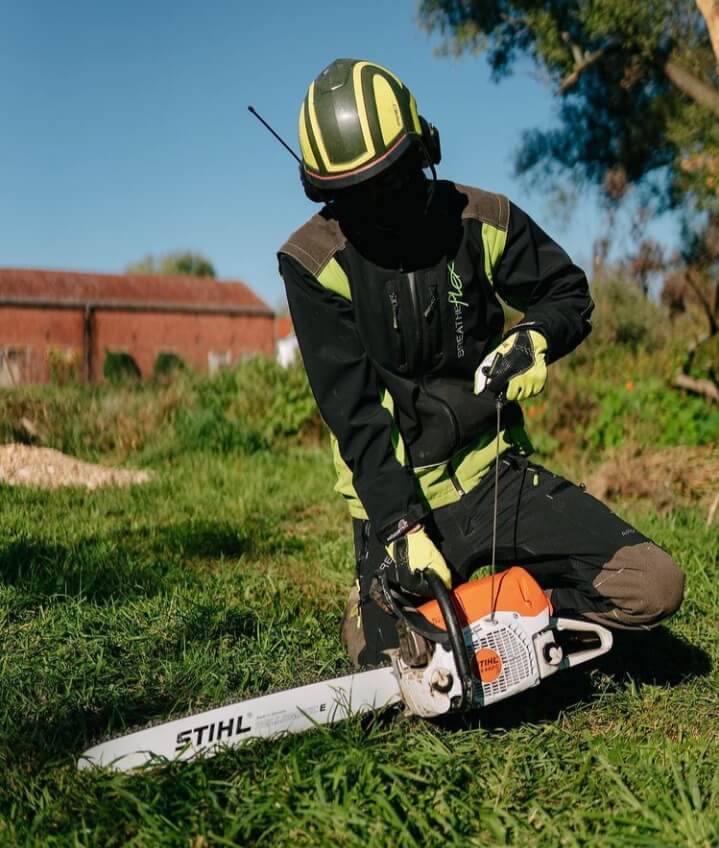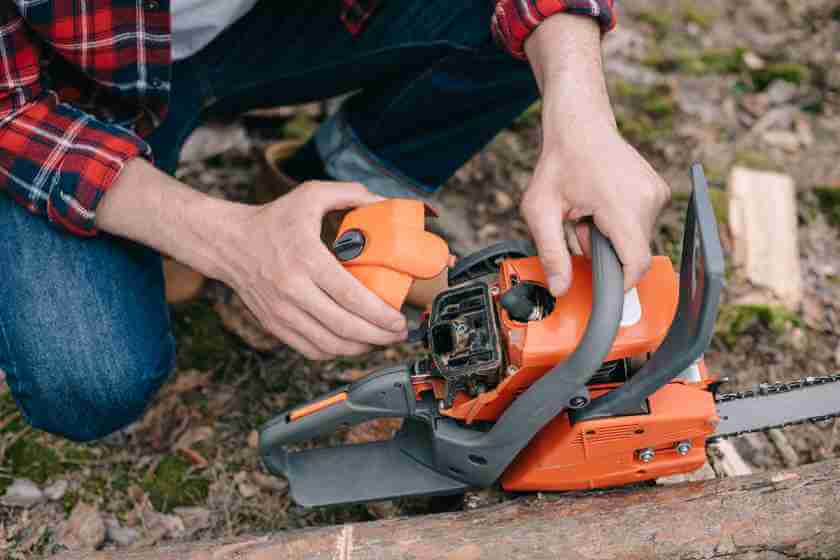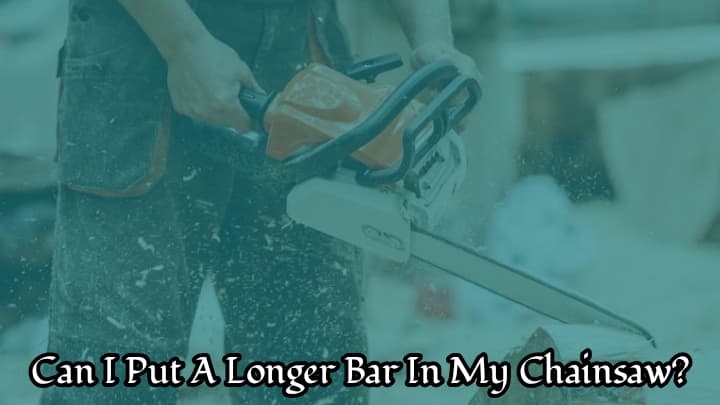There is nothing more important than the bar when it comes to chainsaws. The bar makes the saw go and allows it to cut through wood like butter.
Just like that, the longer and more sturdy the bar, the better your chainsaw will perform. Today, we’re going to answer your question, “Can I put a longer bar on my chainsaw?“.
The answer to your question as to whether or not you can put a long bar on your chainsaw is “yes.” You can upgrade the length of the saw’s bar by using an extended saw guide. With this, all you need to do is attach it to the existing bar and be ready for action.
The only downside to this type of upgrade is that you’ll need a stronger extension cord, so if your current one isn’t up to par, then there might be an issue with that.
A much better option would be the installation of a new chainsaw. This way, you can have a brand-new saw with a longer bar. However, these types of upgrades are more expensive than simply upgrading your saw with a comprehensive guide.
Table of Contents
What Is The Difference Between A Long Bar And A Short Bar?

If you have a short bar on your chainsaw, it means that the part of the saw furthest from the handle is not long enough to enable it to cut through wood. You need to replace this part with a longer one to make it longer.
The length of the bar will depend on how much use you intend for your saw. For occasional usage, a short bar will be more than enough; for heavy-duty work, you’ll want a long bar.
In addition to length, there are other aspects of the bar that you should consider when looking for what type of bar is right for your needs.
You should consider whether or not you want an aluminum or steel bar and whether or not you want a curved or straight one. There’s no right or wrong answer here, but bars typically come in 3-4 different styles.
Pros Of Longer bars
- The bar itself is long enough to reach the ground for a comfortable stance
- The longer bar will allow for more power to be transferred from the engine to the cutting edge
- A longer bar will increase your chainsaw’s life span
- A longer bar makes it easier to maneuver around tight spaces
- A longer bar gives you more control over your chainsaw
- A longer bar can reduce vibrations caused by the engine and rough terrain
- A longer bar will make your work easier as you have more leverage in hand controls
- The top of the bar can be used as a guard to stop debris from getting into the chain area
Cons of longer bars
The negative consequences of putting a longer bar on your chainsaw are not worth the benefits. Here are the cons to a longer bar:
- The longer you extend the bar, the more difficult it is to maneuver the saw while cutting
- If you put too long of a bar on your chainsaw, then it becomes very heavy and can be hard to handle
- You could potentially cut yourself if you’re not careful enough with what length of bar you use
- If you put a long enough bar on your saw, then it could be dangerous for other people around you
What Else To Change With The Bar?
There are a few things you can change with your bar to help optimize the performance of your saw. With that being said, the only thing you should change on the bar in the length. Reducing diameter or adding thickness will not help improve the performance of your saw.
If you want to balance out the weight and make it easier for people to handle, consider adding counterweights at either end of the bar. The more pressure and force you put in at one end, the more force will be applied to the opposite side as well.
As mentioned above, if you want to balance out the weight, consider adding counterweights at either end of your bar. Another thing that would be helpful is adding more teeth per inch (TPI).
The number of TPI determines how quickly a blade cuts through wood. More TPI equals faster cutting time and less friction between blade and wood while cutting.
You might also like our comparison on Stihl MS 271 vs Husqvarna 450
How To Make Your Chainsaw Bar?

If you want to make your bar, the first thing you need to do is find a metal that has the hardness that you desire. You’ll also need to find a strong piece of wood that measures 16 x 6 x 3/8 inches to make sure it’s long enough and strong enough.
After finding the suitable materials, you can measure both sides of your wood and subtract 1/8 inch from each side. This will give you an idea of where to place the holes for the rivet. On one side, drill a hole at about 5-1/4 inches from one end of your wood and 2-5/8 inches from the other end.
Then on the other side, drill a hole at about 8-3/4 inches from one end and 3-1/2 inches from the other end. After drilling these holes, attach two screws at each point with washers in between them so as not to split your wood when screwing in your rivets.
Next, it’s time for riveting. First, choose what type of rivet you’ll use based on what kind of tool you have available: awl or round head rivets. Next, place the head of your awl into one hole and then push it through until it’s flush with the backside of your wood. Then take some pliers and hold onto both sides of this new hook that has been created with this process.
Final Thought
There are many reasons why the bar is so important, but the main reason is that it makes the saw go and allows it to cut through wood like butter.
The bar also helps provide balance, which reduces strain on your wrist. The longer and sturdier the bar, the easier time you’ll have with your chainsaw.
You may like our articles on How To Take A Link Out Of A Chainsaw Chain and 7 Different Types of Chainsaws and Their Uses

